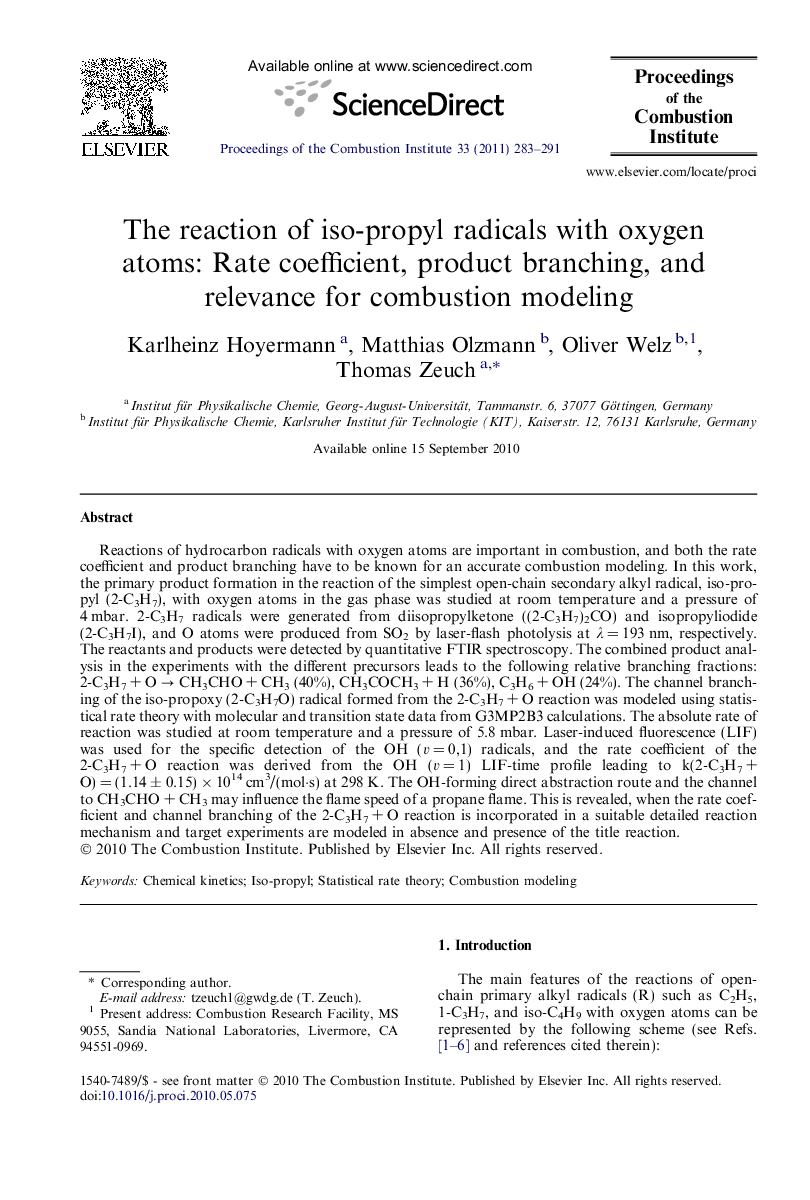| کد مقاله | کد نشریه | سال انتشار | مقاله انگلیسی | نسخه تمام متن |
|---|---|---|---|---|
| 241330 | 1427925 | 2011 | 9 صفحه PDF | دانلود رایگان |

Reactions of hydrocarbon radicals with oxygen atoms are important in combustion, and both the rate coefficient and product branching have to be known for an accurate combustion modeling. In this work, the primary product formation in the reaction of the simplest open-chain secondary alkyl radical, iso-propyl (2-C3H7), with oxygen atoms in the gas phase was studied at room temperature and a pressure of 4 mbar. 2-C3H7 radicals were generated from diisopropylketone ((2-C3H7)2CO) and isopropyliodide (2-C3H7I), and O atoms were produced from SO2 by laser-flash photolysis at λ = 193 nm, respectively. The reactants and products were detected by quantitative FTIR spectroscopy. The combined product analysis in the experiments with the different precursors leads to the following relative branching fractions: 2-C3H7 + O → CH3CHO + CH3 (40%), CH3COCH3 + H (36%), C3H6 + OH (24%). The channel branching of the iso-propoxy (2-C3H7O) radical formed from the 2-C3H7 + O reaction was modeled using statistical rate theory with molecular and transition state data from G3MP2B3 calculations. The absolute rate of reaction was studied at room temperature and a pressure of 5.8 mbar. Laser-induced fluorescence (LIF) was used for the specific detection of the OH (v = 0,1) radicals, and the rate coefficient of the 2-C3H7 + O reaction was derived from the OH (v = 1) LIF-time profile leading to k(2-C3H7 + O) = (1.14 ± 0.15) × 1014 cm3/(mol·s) at 298 K. The OH-forming direct abstraction route and the channel to CH3CHO + CH3 may influence the flame speed of a propane flame. This is revealed, when the rate coefficient and channel branching of the 2-C3H7 + O reaction is incorporated in a suitable detailed reaction mechanism and target experiments are modeled in absence and presence of the title reaction.
Journal: Proceedings of the Combustion Institute - Volume 33, Issue 1, 2011, Pages 283–291